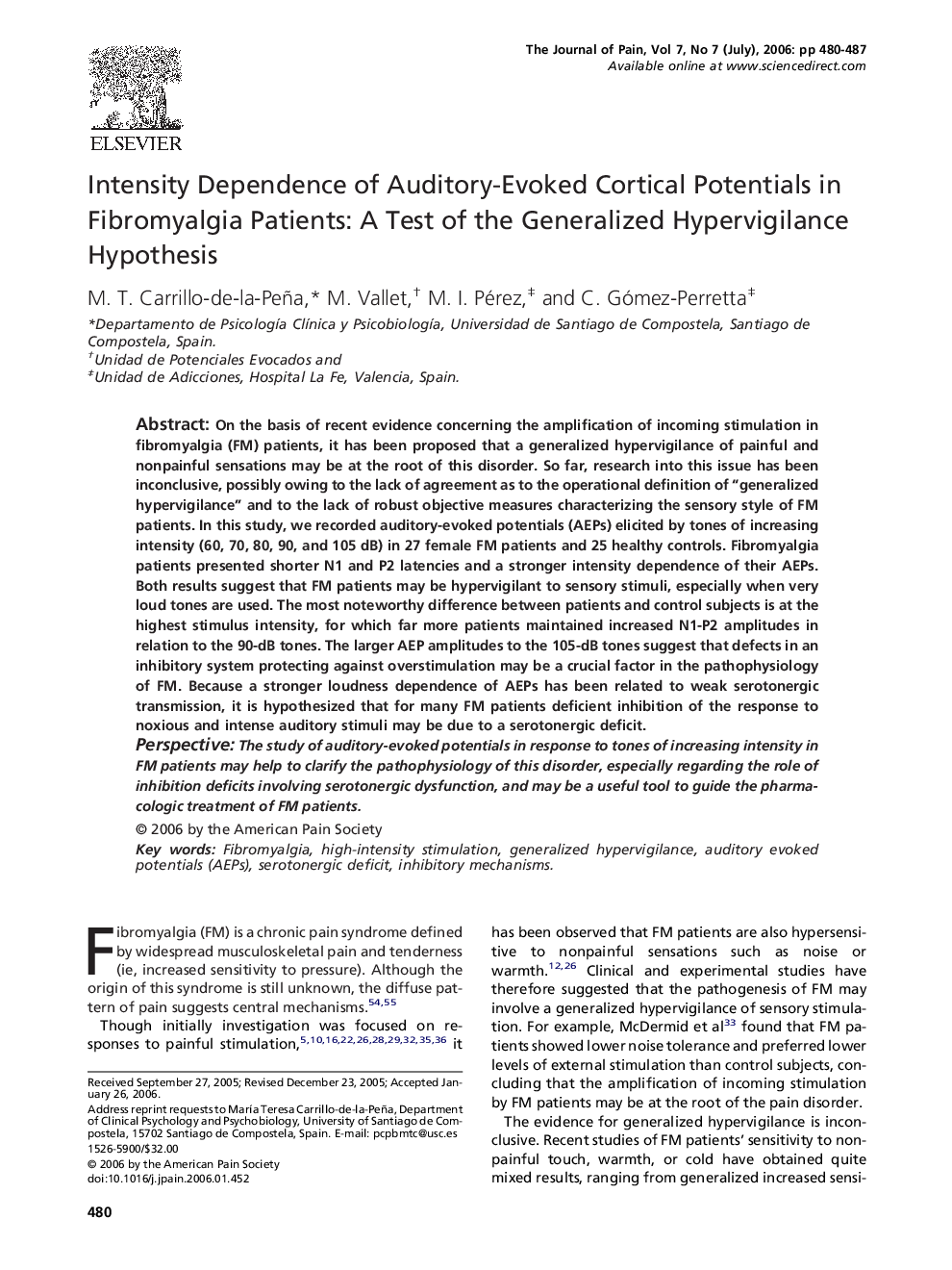| Article ID | Journal | Published Year | Pages | File Type |
|---|---|---|---|---|
| 2723896 | The Journal of Pain | 2006 | 8 Pages |
On the basis of recent evidence concerning the amplification of incoming stimulation in fibromyalgia (FM) patients, it has been proposed that a generalized hypervigilance of painful and nonpainful sensations may be at the root of this disorder. So far, research into this issue has been inconclusive, possibly owing to the lack of agreement as to the operational definition of “generalized hypervigilance” and to the lack of robust objective measures characterizing the sensory style of FM patients. In this study, we recorded auditory-evoked potentials (AEPs) elicited by tones of increasing intensity (60, 70, 80, 90, and 105 dB) in 27 female FM patients and 25 healthy controls. Fibromyalgia patients presented shorter N1 and P2 latencies and a stronger intensity dependence of their AEPs. Both results suggest that FM patients may be hypervigilant to sensory stimuli, especially when very loud tones are used. The most noteworthy difference between patients and control subjects is at the highest stimulus intensity, for which far more patients maintained increased N1-P2 amplitudes in relation to the 90-dB tones. The larger AEP amplitudes to the 105-dB tones suggest that defects in an inhibitory system protecting against overstimulation may be a crucial factor in the pathophysiology of FM. Because a stronger loudness dependence of AEPs has been related to weak serotonergic transmission, it is hypothesized that for many FM patients deficient inhibition of the response to noxious and intense auditory stimuli may be due to a serotonergic deficit.PerspectiveThe study of auditory-evoked potentials in response to tones of increasing intensity in FM patients may help to clarify the pathophysiology of this disorder, especially regarding the role of inhibition deficits involving serotonergic dysfunction, and may be a useful tool to guide the pharmacologic treatment of FM patients.
